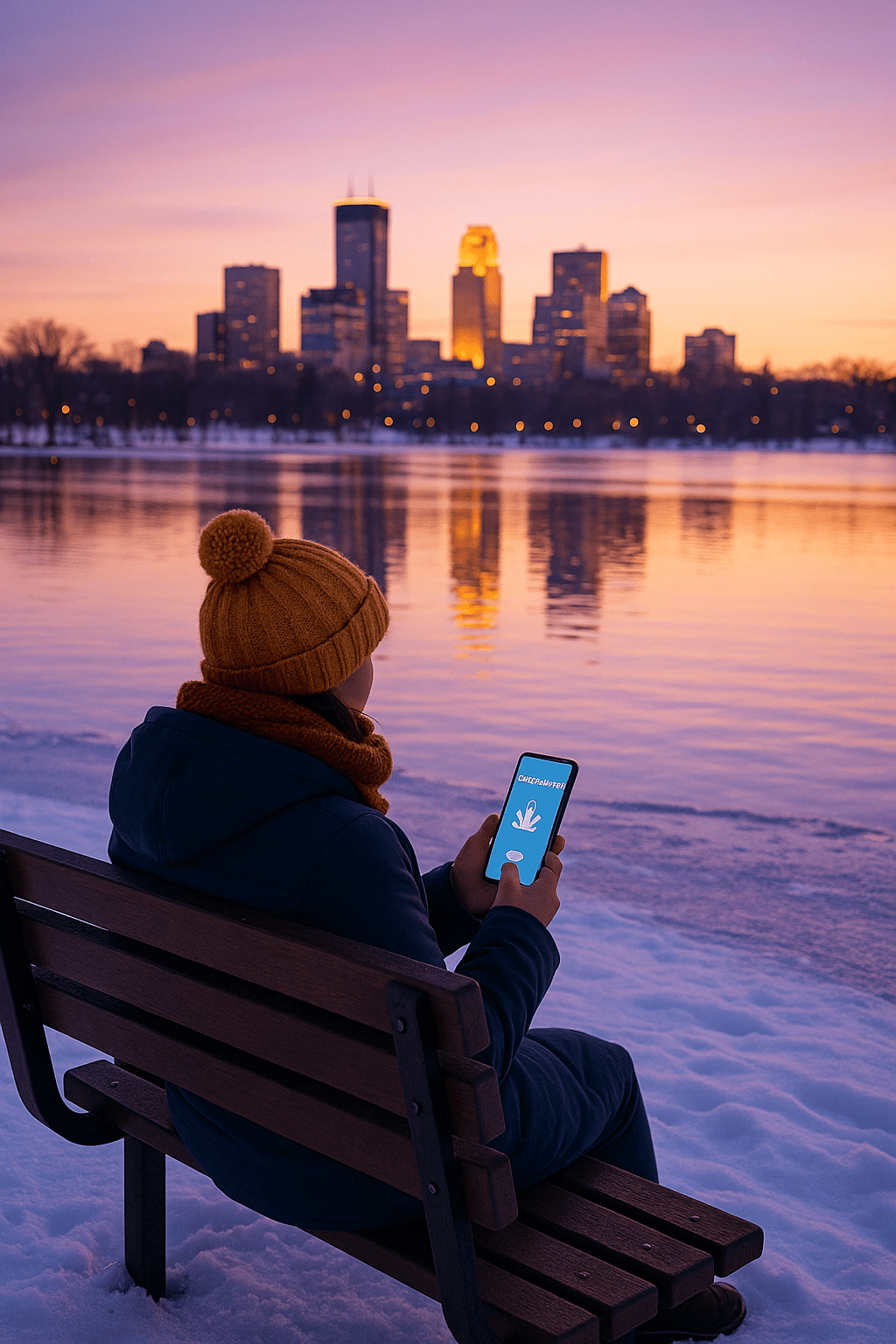
Excerpt: Explore how mindfulness apps compare to traditional therapy in Minnesota. Learn benefits challenges and local context to help you decide what might work best for your mental wellbeing.
Tags: mindfulness, therapy, Minnesota, mentalhealth, apps
In Minneapolis or St Paul you might wonder whether using a mindfulness app or meeting with a therapist makes more sense. You notice stress builds after a long day at your Target or General Mills job. You catch yourself scrolling Headspace on your phone instead of booking a traditional session at Mayo Clinic or with a HealthPartners counselor.
That scenario shows the choice many Minnesotans face. Both options aim to support mentalhealth. Yet they offer different strengths. This article explores those differences so you can choose with confidence.
Problem or issue introduction
Many people in Minnesota experience stress anxiety or low mood. You might try an app like Headspace Calm or Insight Timer when a therapist is not available or you are on a waiting list at U of M clinics or Allina Health. Apps offer convenience. They work late at night after a day at a corporate job in Bloomington. They can reduce stress quickly in moments of tension.
Traditional therapy offers a trained clinician with expertise. You build trust and explore deeper emotional patterns. Therapy can help with trauma anxiety depression or complex issues. Apps mean interacting with a screen. They may lack nuance or the accountability of scheduling in‑person care.
In remote areas outside Rochester or Duluth mentalhealth clinics may be far away. Apps can help in the meantime. But some users may find their symptoms worsen if content is generic or not monitored. A recent Guardian piece reported cases where digital tools increased self‑harm risk due to poor design or oversight University of Minnesota Twin Cities.
Studies show moderate evidence that mindfulness apps reduce stress anxiety and depression in general populations. A meta‑analysis showed moderate certainty that apps reduce stress by about 0.44 standard deviation units and improve wellbeing PubMed. Researchers note sustained engagement is a challenge.
Therapy cost and provider shortages create barriers. In metro areas waitlists at clinics like Mayo Clinic or U of M may delay services for weeks. Meanwhile users seeking immediate relief may try apps. This tension forms the real decision point for Minnesota residents.
Minnesota specific context
Minnesota winters bring shortened daylight and seasonal affective disorder among many residents. Using national data as Minnesota specific research unavailable researchers estimate 5 to 10 % of Minnesotans experience SAD symptoms from October through January with peak in December and January
In Minneapolis and St Paul light therapy is offered at community centers and U of M research labs. For residents in Rochester or Duluth access may be limited. Apps promise 24 hour access during long winter nights. Many users in cabin culture communities turn to Headspace or Calm after a long day by a lake.
HealthPartners and Allina Health clinics in Bloomington and Minnetonka may refer patients to therapy groups or apps when waitlists are long. Employers like Target or 3M sometimes promote mindfulness app subscriptions as part of employee wellness.
If you rely on general U.S. SAD prevalence data you must note using national data as Minnesota specific research unavailable. That includes estimates from SAMHSA or NorthStar Regional indicating 5 to 10 % prevalence in winter months.
This context shows why Minnesota residents face unique factors when choosing apps or therapy during dark winters stress at work isolation and seasonal mood shifts.
Research and science behind the topic
Studies from 2024 show that mindfulness apps reduce stress moderately. One meta analysis found stress reduction effect size of around 0.435 standard deviation and improvements in wellbeing 0.431 units. Effects on depression and anxiety were smaller but significant for distressed populations PubMed.
Another real world analysis of Headspace users found average perceived‑stress reduction of 23 % over 30 days and higher improvement among those engaging more frequently mhealth.jmir.org.
Concerns remain about privacy regulation and possible harm when apps are poorly designed. A Guardian report described how some tools increased self‑harm behaviors in vulnerable users theguardian.com.
Comparisons of mindfulness plus therapy versus therapy alone are limited. A 2024 German trial of app plus face‑to‑face intervention found no additional benefit compared to single methods. In fact greater app use sometimes correlated with higher stress frontiersin.org.
Traditional therapy such as cognitive behavior therapy or mindfulness‑based stress reduction remains the gold standard in many cases. MBSR shows moderate efficacy across anxiety and depression outcomes in clinical populations en.wikipedia.org+1Nature+1.
Personal story or case example
Jane from Duluth works at U of M Duluth campus library. In November she notices her mood drop and energy plummet. She tries Headspace nightly as days shorten and daylight retreats. She uses sessions four nights per week but sees only small change. She finds herself craving carbs and sleeping more.
She recalls advice from a Mayo Clinic psychiatry outreach program and decides to book a local therapist in Rochester recommended by her employer wellness plan. She speaks with a counselor via HealthPartners network. Over six sessions she learns coping tools tailored to her SAD and stress at work. She supplements sessions with short app meditations but keeps track of usage.
Over weeks her mood improves. She attends a light therapy session offered at U of M Duluth and spends mornings walking by Lake Superior when possible. The combination of structured therapy tools community supports and moderate app use helps stabilize her mental health as winter deepens.
Practical tips and strategies
Here are actionable steps to help Minnesota residents decide and use tools wisely
1. Use app free trials like Headspace Calm or Insight Timer before committing.
2. Track how often you engage. Aim for at least four sessions per week.
3. Combine app use with local supports. Attend light therapy sessions in Minneapolis or Duluth.
4. Seek referral to a therapist via Mayo Clinic HealthPartners or U of M networks.
5. If waitlists are long use app while waiting but schedule therapy at the same time.
6. Practice mindfulness outdoors when weather allows in fall or winter. Even brief sun exposure helps.
7. Monitor mood and stress. If symptoms worsen or persist consult your provider.
8. Choose apps with evidence. Prefer those studied in 2024‑2025 scientific research.
9. Avoid apps with known privacy issues. Review policies before using.
10. Use therapy for deep or persistent symptoms and use app support between sessions.
FAQs
Q1: Can mindfulness apps replace traditional therapy completely?
A1: Apps can help reduce stress and support wellbeing. For deep or persistent mentalhealth issues traditional therapy is recommended. Consult your provider.
Q2: Are mindfulness apps effective for seasonal affective disorder?
A2: Apps help with stress but may not address SAD fully. Light therapy in Minnesotan winter clinics often works better. Using national data as Minnesota specific research unavailable.
Q3: Is it safe to combine an app with therapy?
A3: Yes combining app and therapy can support continuity. Monitor for stress increases and discuss usage with your provider.
Q4: What if I cannot access a therapist in Duluth or Rochester?
A4: Use apps meanwhile reach out to remote therapy via HealthPartners or Mayo Clinic online.
Q5: How often should I use the app?
A5: Evidence suggests higher engagement matters. At least four sessions per week yields better stress reduction.
Q6: Are all apps equally effective?
A6: No evidence varies. Choose apps validated by 2024‑2025 research and with clear privacy policies.
Q7: Can apps cause harm?
A7: Rare cases show poorly designed apps increased distress. If symptoms worsen stop app and consult provider.
Conclusion
Making the choice between mindfulness apps and traditional therapy is personal. In Minnesota the combination often works well. Apps offer convenience and immediate stress relief during dark winter nights or after work in Minneapolis St Paul or Duluth. Traditional therapy gives depth tailored help and long‑term benefits. Using apps in moderation along with local resources brings hope. Your mentalhealth is worth the care you choose. Reach out and keep moving forward in winter and beyond.
Get Support:
Find a local Therapist: https://mindfullyhealing.com/clinicians
(952) 491‑9450
Sources:





